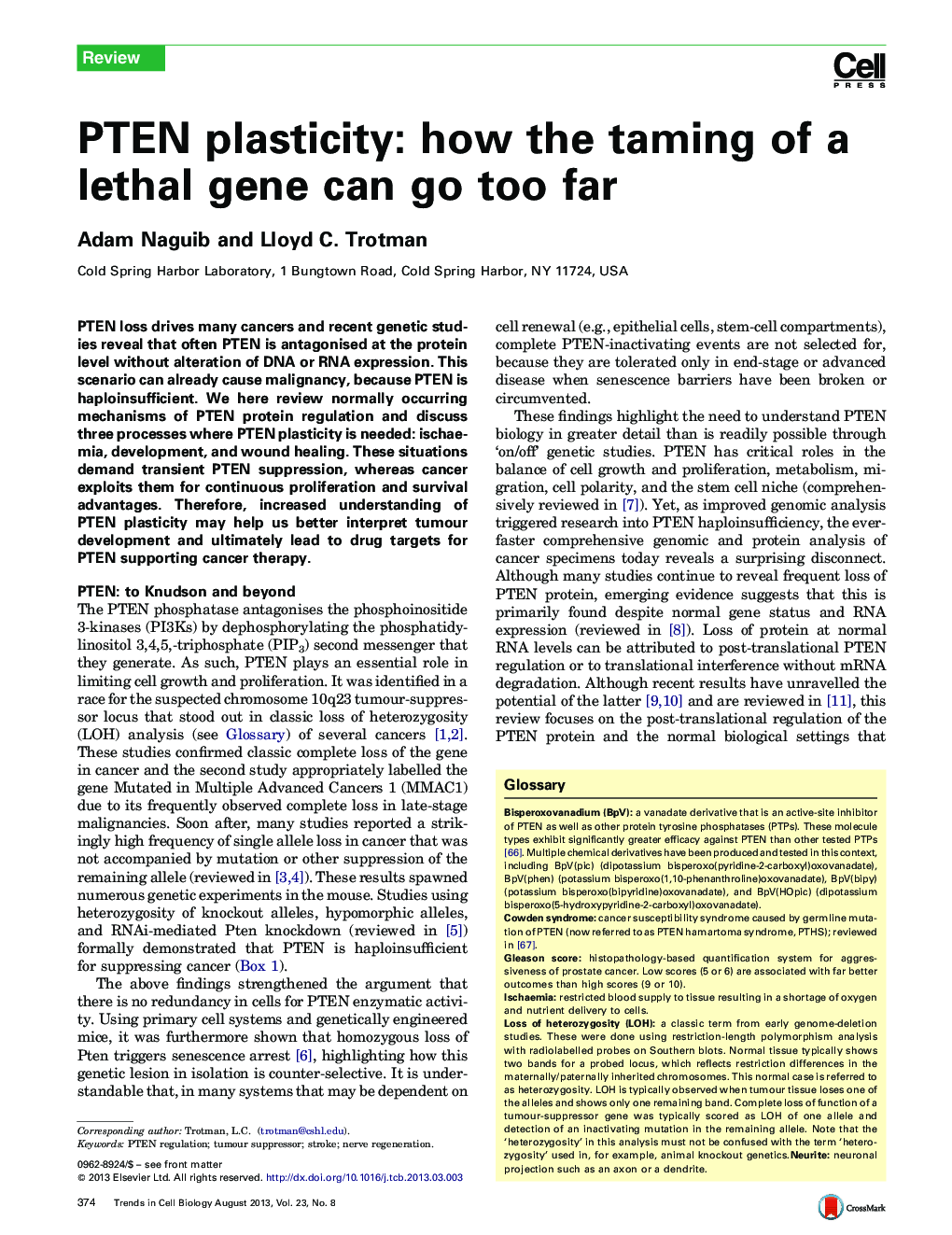| Article ID | Journal | Published Year | Pages | File Type |
|---|---|---|---|---|
| 2204465 | Trends in Cell Biology | 2013 | 6 Pages |
► Tissues dynamically adjust PTEN levels for development, survival, and repair. ► Pharmacological PTEN inhibition promotes recovery from insults. ► Cells and tissues use ubiquitination to suppress PTEN by degradation or mislocalisation. ► Cancer exploits natural PTEN plasticity mechanisms. ► Candidate cancer drug targets for PTEN therapy exist, but validation is still lacking.
PTEN loss drives many cancers and recent genetic studies reveal that often PTEN is antagonised at the protein level without alteration of DNA or RNA expression. This scenario can already cause malignancy, because PTEN is haploinsufficient. We here review normally occurring mechanisms of PTEN protein regulation and discuss three processes where PTEN plasticity is needed: ischaemia, development, and wound healing. These situations demand transient PTEN suppression, whereas cancer exploits them for continuous proliferation and survival advantages. Therefore, increased understanding of PTEN plasticity may help us better interpret tumour development and ultimately lead to drug targets for PTEN supporting cancer therapy.
